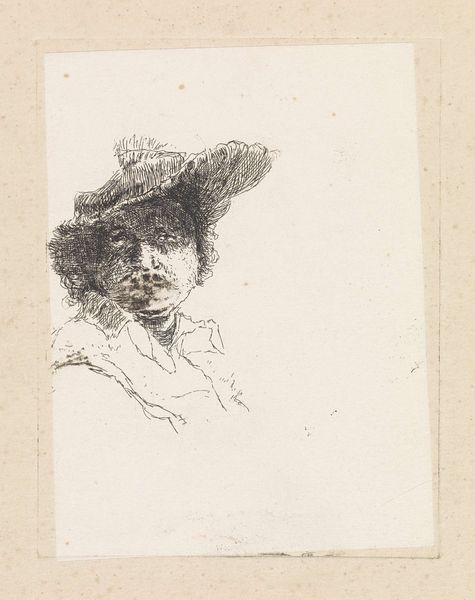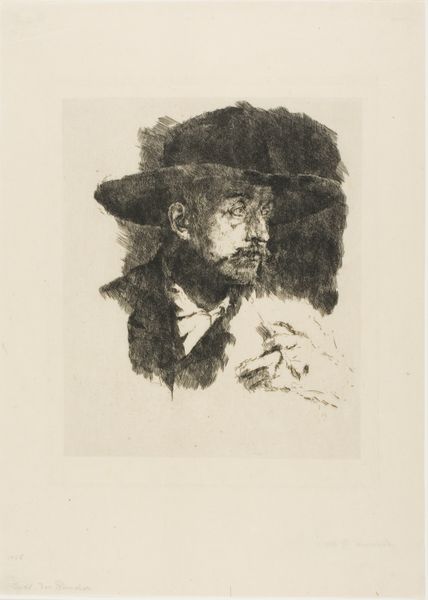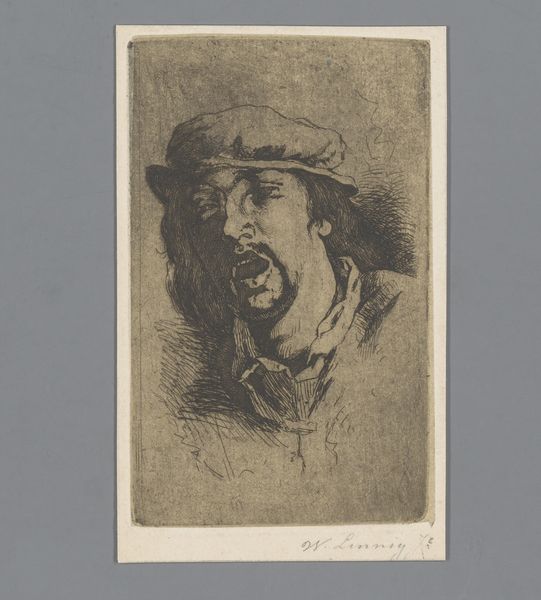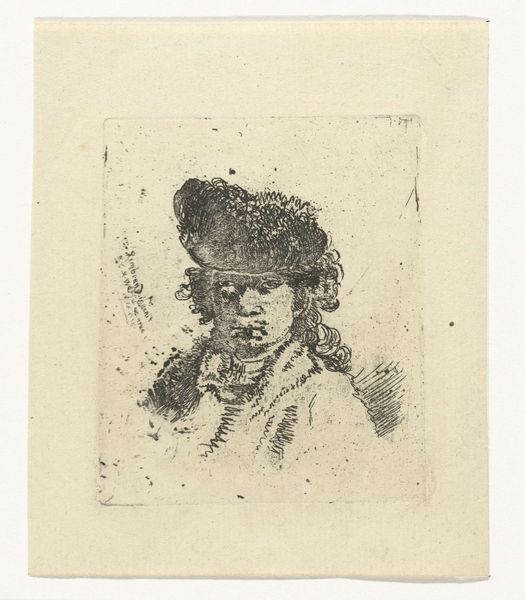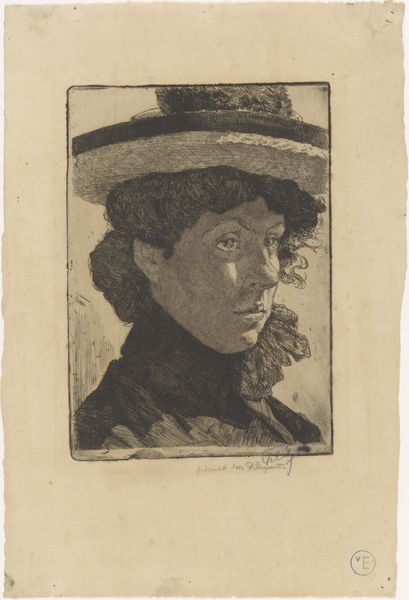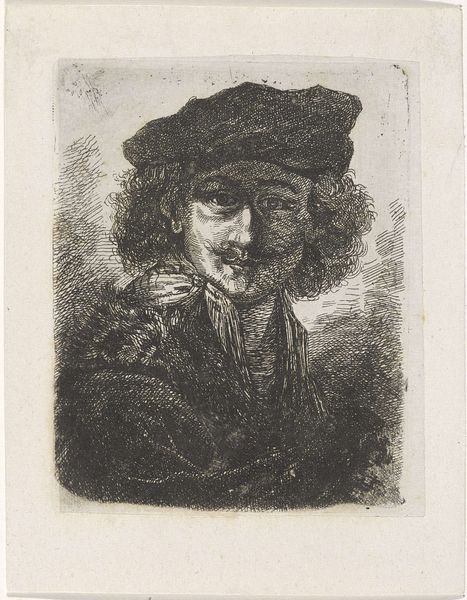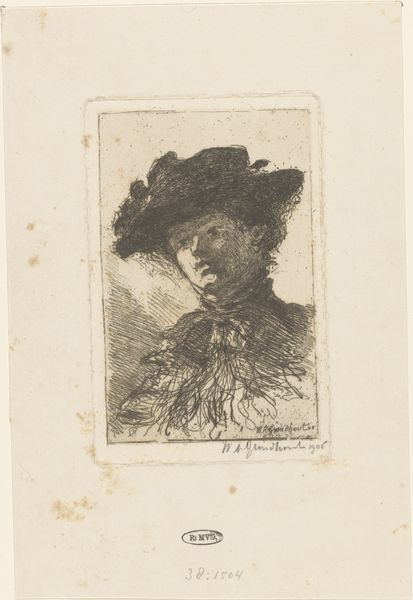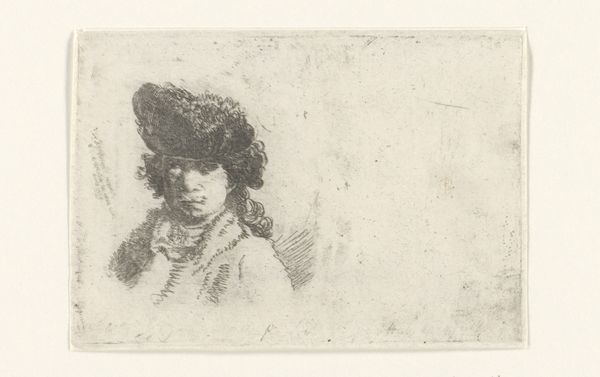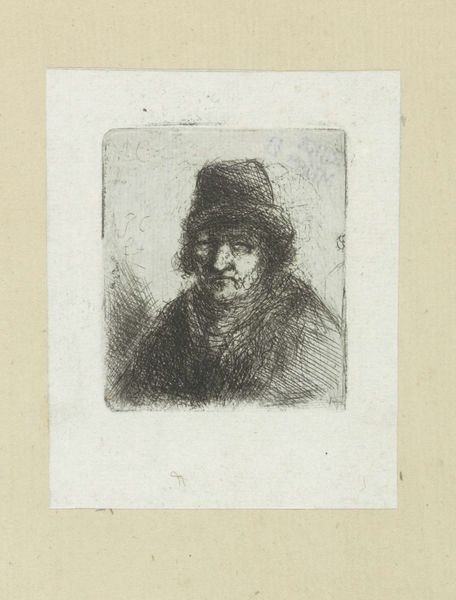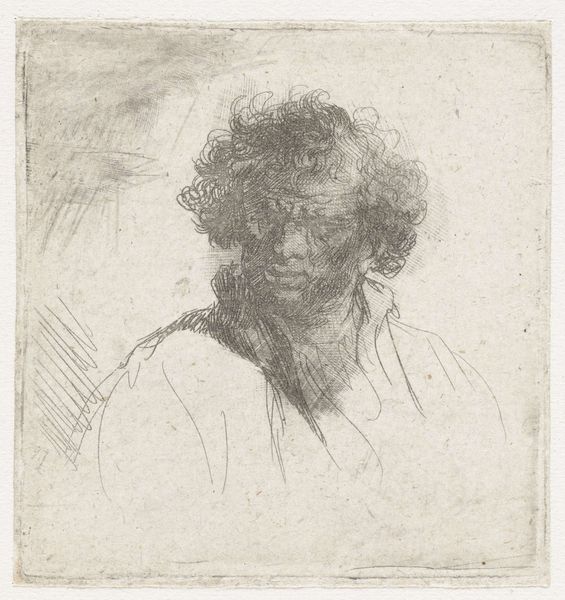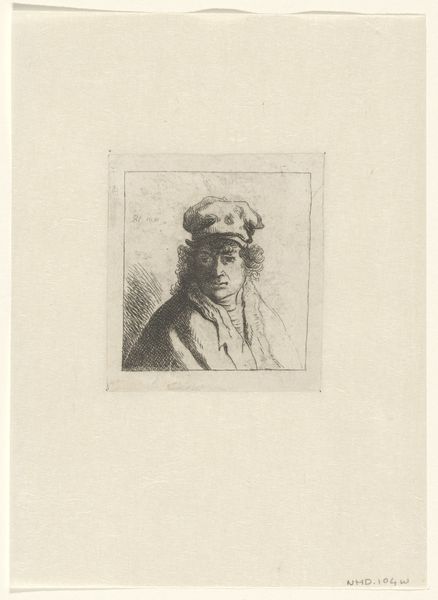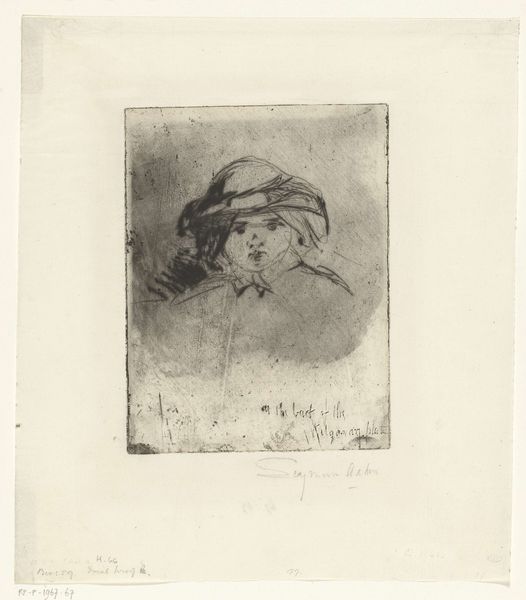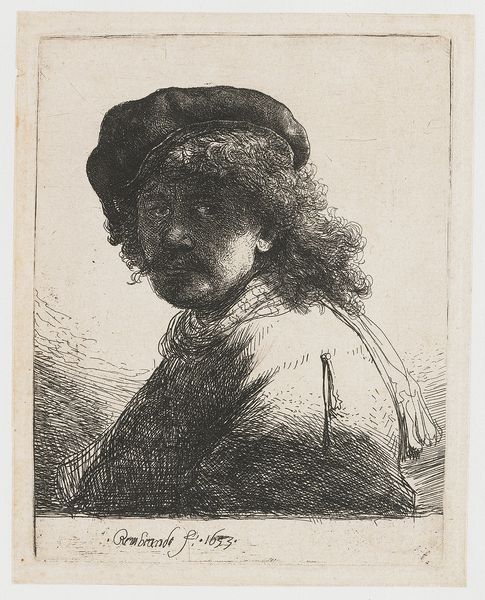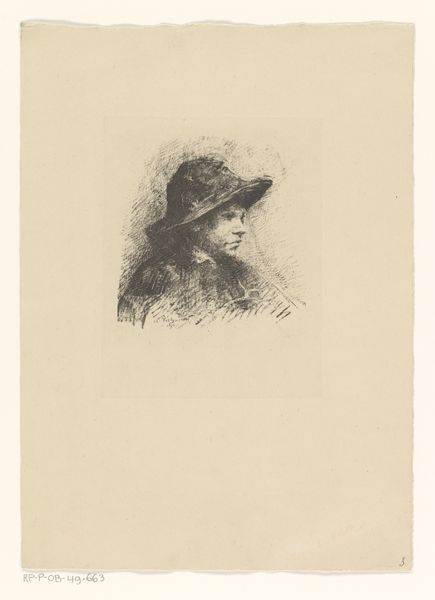
etching
#
portrait
#
etching
#
etching
Dimensions: height 74 mm, width 61 mm
Copyright: Rijks Museum: Open Domain
This is Claude Henri Watelet’s etching of Rembrandt van Rijn, made sometime in the 18th century. But what does it mean for one artist to depict another? In 18th-century France, the institutions of art – the Academy, the Salon, the art market – were becoming increasingly powerful. Artists were more and more aware of their place in a historical lineage, and portraits of great masters were a way of staking a claim to that lineage. By depicting Rembrandt, Watelet is aligning himself with the Dutch master's emphasis on light, shadow, and the drama of human expression. However, it's important to remember that Watelet was also operating within a specific social context. France was a society defined by rigid class distinctions and elaborate courtly rituals. What could have been Watelet's intention, depicting Rembrandt in such a gestural style when French art was defined by perfect lines? To fully understand this image, we can look to period writings and other cultural products. Art never exists in a vacuum, but emerges from a complex web of social, economic, and political forces.
Comments
No comments
Be the first to comment and join the conversation on the ultimate creative platform.
